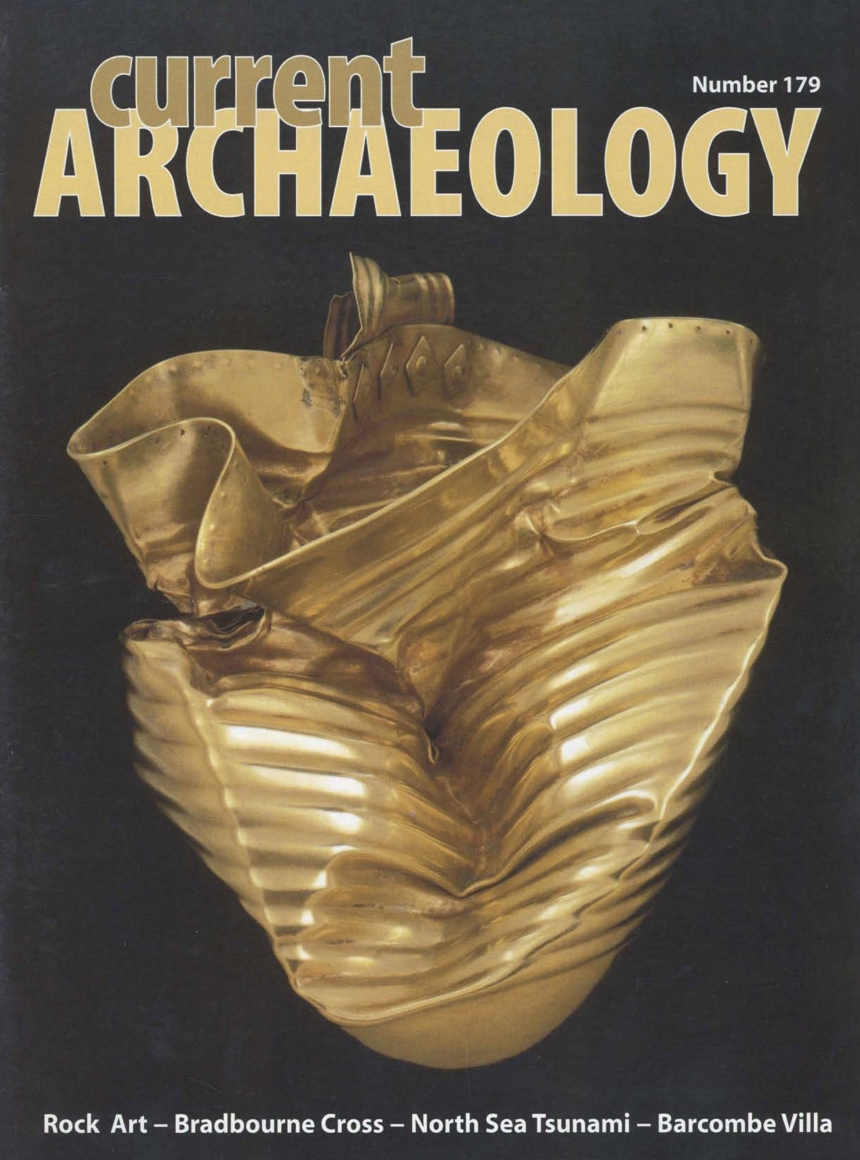Some time around 6,000 BC, a giant tsunami, or ‘tidal wave’ swept across the North Sea from Norway, causing havoc to the east coast of Scotland. In many sand-dunes, traces of its ferocity can still be seen, and here David Smith presents the geological evidence for this disaster: but how far is it attested to archaeologically? Caroline Wickham-Jones casts a quizzical eye over the evidence from the archaeological point of view.
In the churchyard at Bradbourne church stands a Saxon cross, apparently there since time immemorial. In fact it was only re-erected in 1886 – but how far can we chart the story of what happened to the cross between its original carving and its current eminence?
How rapidly did Roman civilisation spread across Britain? At the Barcombe Roman villa, in Sussex, round houses were still being constructed in the second century: recent discoveries by an archaeological field school have produced a rather more complex story than had been expected.
Where should Palaeolithic flint hand axes be discovered? The obvious answer is down in the river valleys, but over the past 20 years, the Dover Archaeological Group have been finding a different story.
A major feature of this issue is a number of shorter reports. On the front cover is the splendid Bronze Age gold cup discovered on the Isle of Thanet; here we . have the first archaeological report on the discovery. Other news items cover a Bronze Age village discovered in the Hebrides at Cladh Hallan – where the layout appears to be ‘sun-wise’; evidence that the Romans re-used Avebury and turned one of the ‘coves’ into a temple; and an account of the latest discoveries of cup-and-ring marked stones, including the splendid story of how one was discovered while building a children’s playground in Derbyshire.
Finally, there are two rival accounts of what should be done with our finds. The Museum of London has just spent £2.5 million on making them more accessible to the public, while Julian (“‘Meet the Ancestors”) Richards wants to leave them in the field …

